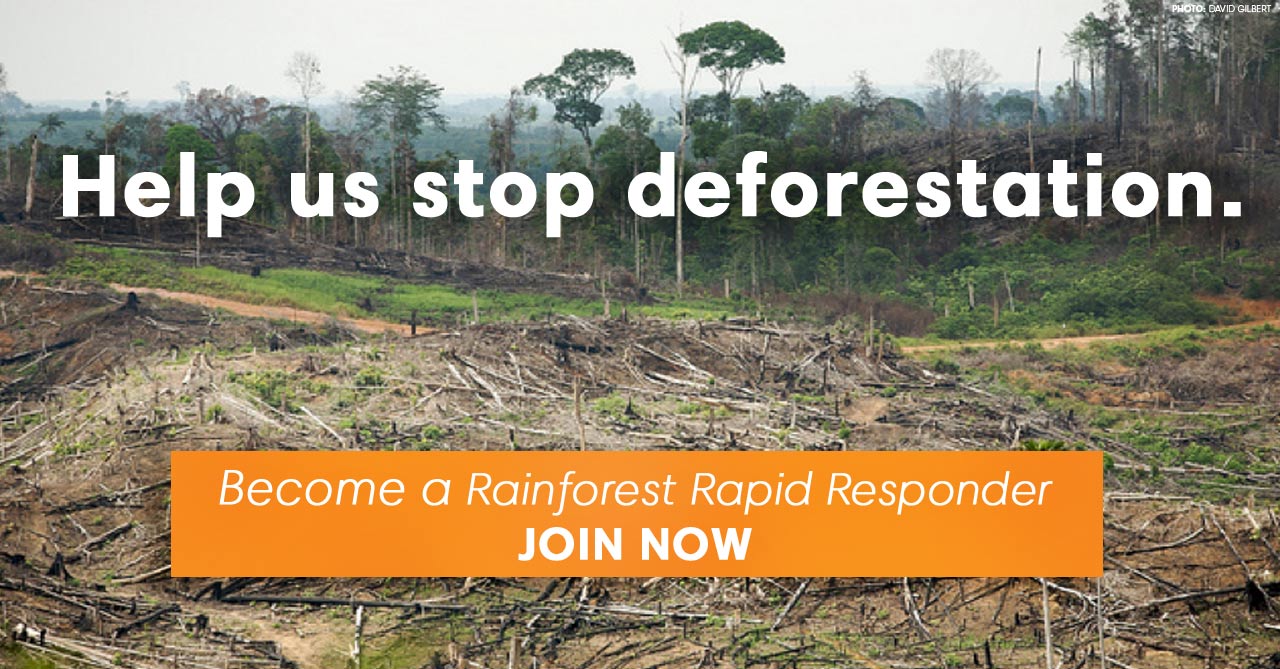Rainforests across the world are in great danger. Food and Agriculture Organization’s 2016 State of the Forests report revealed that 7 million hectares of forest are lost annually while agricultural land expands by 6 million. The biggest threat to forests today is industrial agriculture production of commodities like Conflict Palm Oil, fabric, paper and logging. Only 4 billion hectares of forest remain worldwide according to Global Forest Resources Assessment 2015.
How many trees are cut down each year? For what purpose?
- As for how many trees are cut down each year, IntactForests.org concludes that intact forest landscapes from 2000-2013 were reduced globally by 70,000 square kilometers per year (about the size of Costa Rica) for a total of 919,000 square kilometers. As to the “number of trees” this represents, it’s impossible to get an accurate count. Tree density in primary forests varies from 50,000-100,000 trees per square km, so the math would put this number at 3.5 billion to 7 billion trees cut down each year.
- According to IntactForests.org, major categories contributing to forest loss include: Timber harvesting (37%), agricultural expansion (28%), wildfire (21%), construction of roads for resource mining and extraction, pipelines, and power lines (12%) and expansion of transportation networks via roads (2%).
3.5 billion to 7 billion trees are cut down per year.
What are the major impacts of mass deforestation and forest loss?
- Loss of Biodiversity: Forests are the only liveable habitat for a variety of species around the globe — many of which have not even have been discovered. For example, just one area of forest — Indonesia’s rainforests — covers just 1 percent of the Earth’s land area, but contains 10 percent of the world’s known plant species, 12 percent of mammal species — including endangered orangutans and critically endangered Sumatran tigers and rhinos – and 17 percent of all known bird species.
- Loss of Carbon Sinks & Increased Climate Change: Forests, and especially rainforests, store massive amounts of carbon in their forests and peatlands. They serve as carbon sinks, absorbing carbon released into the atmosphere from fossil fuels. Conversely, when forests are cut down, they release that carbon back into the air. Twenty percent of global greenhouse gas emissions come from felling the world’s forests.
- Land Rights and Livelihoods: Forest destruction pushes frontline communities and Indigenous peoples out of their homes, violating their human rights, their land rights all while destroying their way of life.
Become a Rainforest Rapid Responder
With Rainforest Action Network’s impeccable research, we follow the money from the forest fires all the way back to the board rooms of the world’s 20 largest snack food corporations — known as the Snack Food 20. Our Action Network have protested at their offices, called them out on social media, and hounded their CEOs at speaking events — forcing them to change their sourcing policies and stop selling off our future for a fast buck. Join the network that is saving the last remaining rainforests.
